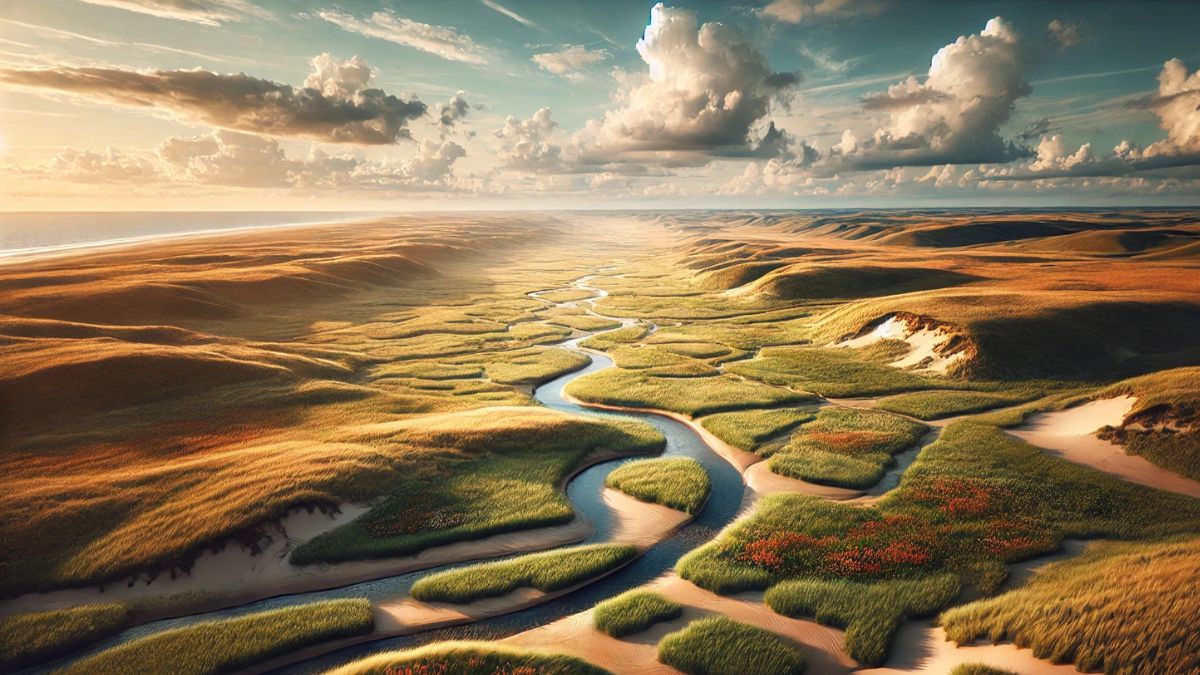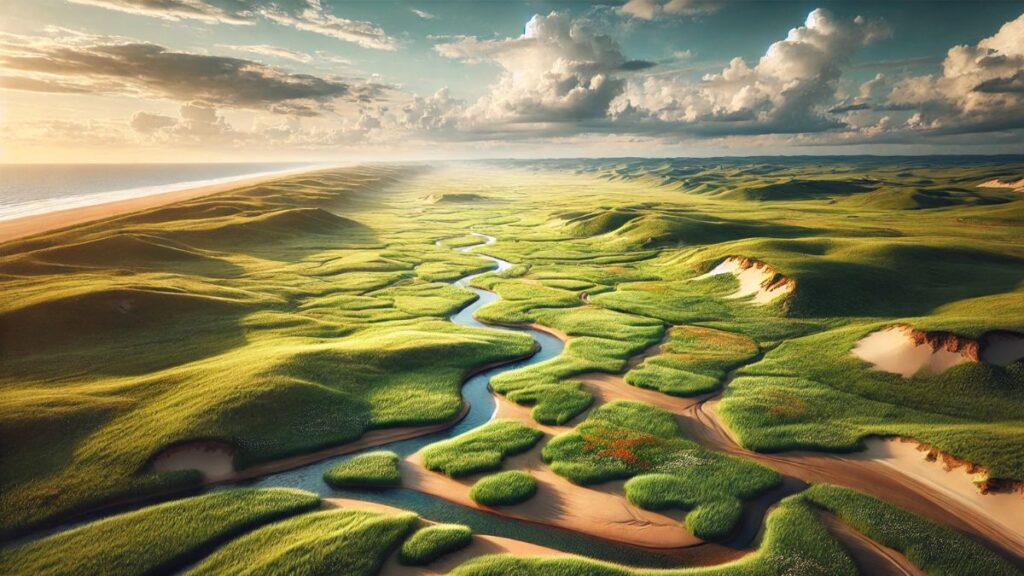What Is the Soil Like in the Coastal Plains?

The coastal plains are a remarkable geographical feature stretching along many of the world’s shorelines. These low-lying regions, often situated between the ocean and inland highlands, are shaped by a combination of geological processes, climate influences, and human activity. Understanding the soil in the coastal plains is essential for agricultural planning, infrastructure development, and environmental conservation. In this article, we delve into the characteristics of coastal plain soils, their formation, uses, and challenges, backed by insights from leading researchers and scientific studies.
Characteristics of Coastal Plain Soils
1. Composition and Texture
Coastal plain soils are typically composed of sediments deposited over millennia by rivers, tides, and waves. These soils often consist of:
- Sand: Common near the shoreline, sand dominates in areas with high wave action.
- Silt: Found in more protected areas, silt contributes to soil fertility.
- Clay: Present in the lower-lying sections, clay provides structure but may impede drainage.
- Organic Matter: Coastal wetlands, such as marshes and mangroves, enrich the soil with organic material, forming fertile zones.
The texture of coastal plain soils varies widely, from sandy and well-drained near beaches to heavy and poorly drained in marshlands.
2. pH Levels
Soil pH in coastal plains ranges from acidic to slightly alkaline, depending on local vegetation, water influence, and sediment sources. Saltwater intrusion often increases alkalinity, while organic decay in wetlands can lead to acidity.
3. Fertility
Fertility in coastal plain soils depends on organic content, drainage, and sediment composition. While sandy soils near the coast are less fertile, riverine and wetland soils enriched with silt and organic matter support diverse plant life.

Formation of Coastal Plain Soils
The soils in coastal plains form through complex interactions of:
1. Sedimentation
Rivers carry sediments from inland areas to coastal regions, depositing layers of sand, silt, and clay. This process is particularly evident in deltas, where sediment deposition creates fertile alluvial soils.
2. Erosion
Erosion shapes the coastal plains by breaking down rocks and transporting mineral particles to lower areas. Wind, water, and wave action are the primary drivers of erosion in these regions.
3. Organic Accumulation
Coastal wetlands, such as mangroves and marshes, contribute to the accumulation of organic matter in soils. Decomposing plant and animal material enriches the soil with nutrients.
4. Sea-Level Changes
Historical fluctuations in sea level have left a lasting impact on coastal plain soils. Rising seas deposit marine sediments, while receding waters expose and weather these layers.
Uses of Coastal Plain Soils
1. Agriculture
Coastal plains are often fertile and support diverse agricultural activities, including:
- Rice Cultivation: Low-lying, water-retentive soils are ideal for rice.
- Fruit Farming: Citrus, bananas, and pineapples thrive in well-drained areas.
- Cash Crops: Crops like cotton and tobacco are grown in sandy and silty soils.
2. Urban Development
The flat terrain and proximity to water make coastal plains attractive for urbanization. However, construction must account for soil stability and drainage.
3. Ecosystem Services
Coastal plain soils support vital ecosystems such as wetlands, which act as natural water filters and carbon sinks. These ecosystems are crucial for biodiversity and climate regulation.
Challenges Facing Coastal Plain Soils
1. Erosion and Sediment Loss
Human activities like deforestation and construction accelerate erosion, reducing soil quality and fertility.
2. Saltwater Intrusion
Rising sea levels and over-extraction of groundwater lead to saltwater intrusion, which damages agricultural soils and freshwater supplies.
3. Pollution
Coastal regions are vulnerable to pollution from industrial runoff, oil spills, and improper waste disposal, which degrade soil quality and harm ecosystems.
4. Climate Change
Increasing temperatures, changing rainfall patterns, and extreme weather events exacerbate soil degradation in coastal plains.
Managing and Conserving Coastal Plain Soils
To ensure the sustainability of coastal plain soils, stakeholders must adopt practices such as:
- Erosion Control: Planting vegetation, constructing barriers, and using sustainable farming techniques.
- Wetland Preservation: Protecting and restoring wetlands to maintain soil health and ecosystem services.
- Saltwater Management: Building barriers and monitoring water extraction to prevent saltwater intrusion.
- Pollution Reduction: Enforcing regulations to minimize industrial and agricultural pollutants.
Notable Research and Contributions
Several researchers and institutions have studied coastal plain soils extensively. Key references include:
- Brady, N.C., & Weil, R.R. (2010). The Nature and Properties of Soils (14th ed.). This foundational text provides a comprehensive overview of soil science, including coastal plains.
- Pethick, J. (2001). Coastal Management and Sea-Level Rise. This work explores the impact of sea-level changes on coastal ecosystems and soils.
- USDA Soil Survey Staff (2020). Soil surveys and classification systems offer detailed insights into the soils of coastal regions.
- Ramesh, R., & Purvaja, R. (2007). Coastal Wetlands: Conservation and Management. This book highlights the role of wetlands in maintaining soil and ecosystem health.
- Gundersen, P., & Kristensen, H.L. (2005). Research on organic matter and soil fertility in coastal areas.
Conclusion
Understanding the soil in the coastal plains is crucial for sustainable development and environmental conservation. These soils, shaped by natural processes and human influence, support diverse ecosystems and agricultural practices but face significant challenges. By adopting sustainable management practices and drawing on scientific research, we can ensure the long-term health and productivity of coastal plain soils.
References
- Brady, N.C., & Weil, R.R. (2010). The Nature and Properties of Soils (14th ed.). Pearson.
- Pethick, J. (2001). Coastal Management and Sea-Level Rise. Taylor & Francis.
- USDA Soil Survey Staff. (2020). Official Soil Series Descriptions. USDA Natural Resources Conservation Service.
- Ramesh, R., & Purvaja, R. (2007). Coastal Wetlands: Conservation and Management. Springer.
- Gundersen, P., & Kristensen, H.L. (2005). Organic Matter and Soil Fertility in Coastal Areas. Journal of Coastal Research, 21(3), 456-468.
